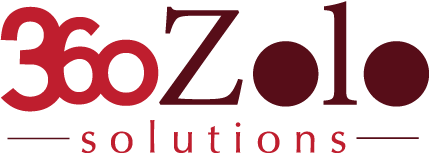Now over six months in, the COVID-19 pandemic has changed “business as usual” in nearly every aspect of commerce and life worldwide—and is particularly complicated for firms with global operations. What should companies look at when evaluating markets in this prolonged and ever-evolving “new normal”? A few considerations follow.
Cross-border travel and transport: From two-week quarantines to outright travel bans, national responses have impacted the movement of people and goods between countries. How will this impact your operations, expansion or M&A plans? What import or export restrictions should you be aware of, or reductions in transport capacity, such as air cargo?
As you answer these questions, be prepared for continued change, and cost implications. “High levels of uncertainty magnify the impact of trade costs on international trade,” the WTO reminds us.
Credit risk: Unemployed workers who can’t pay their bills. Businesses struggling with rent. Examine risks like these in your markets relevant to your business strategy. How resilient are your borrowers? What are the chances of default? And how will the ripple effects of credit risk impact your operations, from customer demand and hiring to office leases and real estate?
Customer behaviors: Restaurant meals become home cooking adventures. Shopping at the mall for a suit and tie becomes browsing online for Zoom-appropriate athleisure. COVID-19 has dramatically changed the products customers buy, the channels they use, and the funds they have available. For example, while many workers have seen their budgets constrained, others have accrued savings previously spent on commutes, travel and entertainment.
Furthermore, with the move to remote work, some of this savings has been applied to products like upgraded computer and videoconferencing equipment, ergonomic chairs and other products for home offices. What do these behaviors look like in your markets, and how will they impact your products and services?
Export restrictions: In the first weeks of the pandemic, dozens of nations applied export prohibitions and restrictions for reasons such as lowering domestic prices for goods and increasing domestic availability. While some of these restrictions have since been lifted, this is still an area to watch, especially in certain sectors. For example, the International Food Policy and Research Institute has created a COVID-19 Food Policy Tracker to track impacts on prices, producers, and vulnerable populations.
Health trends: When the virus is under control and cases start dropping, lockdowns ease, businesses reopen, and both economic activity and consumer confidence return. But relapses and spikes can rapidly set this progress back, making a previously promising market less so.
Monitor health trends closely—a lot can change in just a small amount of time. But take these numbers with a grain of salt, according to FT. “Because there is a lag of weeks to months between when official economic data is produced and the period of time it covers, it is out of date before it is published.”
Government support: Grants, subsidies, stimulus funds—since March, national, provincial, and local governments have dedicated billions and billions to COVID-19 support. What programs are available for your business and industry–with what conditions and for how long?
Policy response: These include benefits—like interest rate cuts, new funding facilities, and tax breaks–and new regulations to follow, protections in the area of rent (e.g. moratoriums, forgiveness) and employee safety. One example of the latter is the EU’s Biological Agents Directive. The directive specifies preventive and protective measures for workers in labs, industrial processes, and isolation facilities in health care. Such measures should be added to your company’s corporate compliance checklist.
Lockdown policies: Mask laws, stay-at-home orders, and restrictions on public activities all affect transmission rates, the health of residents, and the ability to conduct business—and vary greatly from market to market. Even within countries, there can be great differences. Consider, for example, the contrast in the United States between South Dakota, which resists mask requirements and allows large gatherings, and California, which imposed—then re-imposed—sweeping restrictions.
Long-term resiliency: How prepared is the nation for when—not if—the next crisis happens? This includes identification and measures to address vulnerabilities in infrastructure, power, food supply, communications, and healthcare, as well as partnerships across government, industry, and communities to improve the speed, efficiency, and effectiveness of response.
For assistance managing risk in today’s complex world, contact 360 Zolo Solutions.
